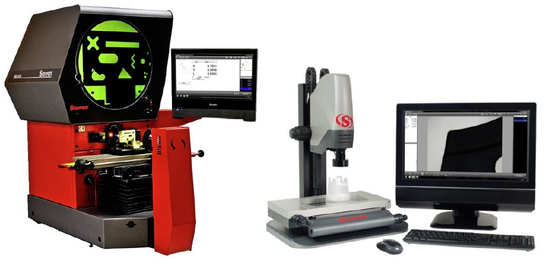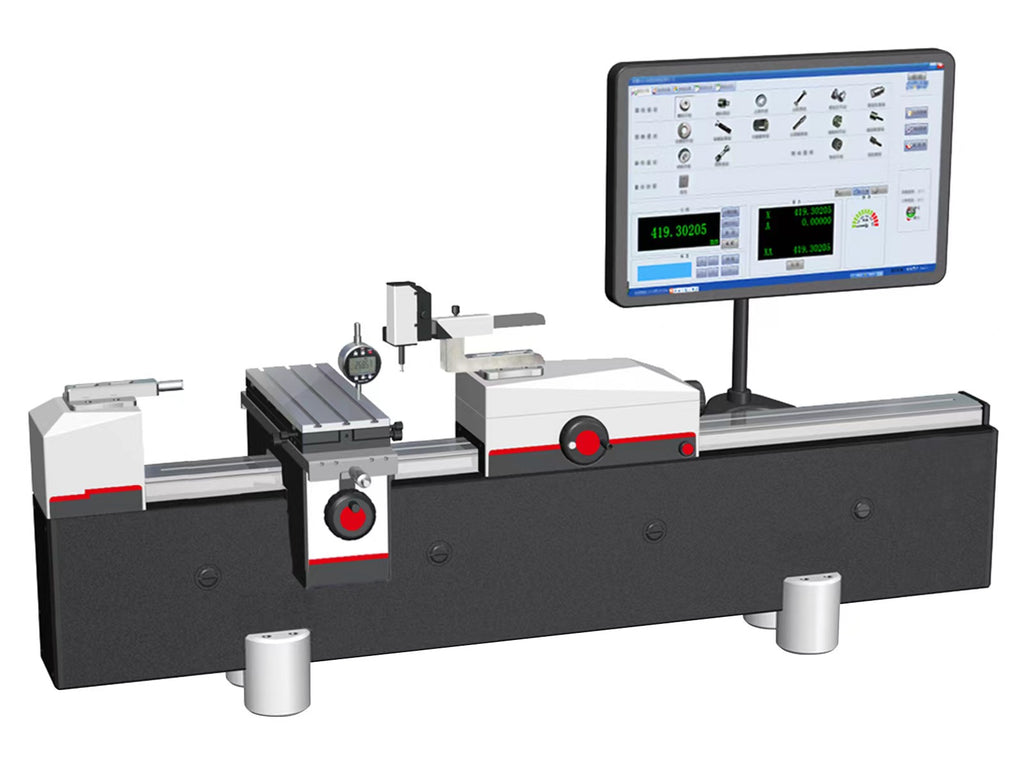The Duty of Optical Dimension Solutions in Advancing Width Techniques
Optical measurement systems have transformed metrology, bringing a level of precision that was once unthinkable. As you explore additionally, you'll find just how these systems are shaping the future of measurement and high quality control.
The Advancement of Assessment: A Historic Point Of View
As you discover the background of width, you'll locate that its evolution shows mankind's mission for accuracy and standardization. From ancient people making use of body parts as units of measurement to the development of standardized weights and procedures, each step reveals our wish for accuracy. The Egyptians built the pyramids making use of exact measurements, while the Romans progressed engineering with their sophisticated measuring devices.
During the Renaissance, scientific developments moved the emphasis toward more empirical methods, leading the means for contemporary assessment. The introduction of the metric system in the late 18th century marked a substantial turning point, developing global standards. Throughout the 20th century, technical innovations further transformed assessment, making it possible for highly accurate dimensions in various fields.
Today, assessment proceeds to develop, incorporating electronic modern technology and automation. This background highlights not just the relevance of dimension yet additionally our relentless search of enhancing precision and uniformity in our increasingly intricate world.
Principles of Optical Measurement Systems
Understanding the concepts behind optical measurement systems is vital for precise lead to width. You'll intend to think about essential optical concepts, dimension precision factors, and effective system calibration strategies. Each of these elements plays a crucial duty in ensuring your dimensions are exact and dependable.
Basic Optical Principles
While discovering optical measurement systems, you'll encounter essential optical concepts that create the foundation of exact data procurement. Light acts in predictable means, and comprehending these actions-- like diffraction, refraction, and reflection-- is crucial for effective dimensions. By understanding these concepts, you'll be furnished to take advantage of optical innovations properly, paving the way for advancements in width and ensuring your dimensions are both repeatable and reliable.
Measurement Accuracy Aspects
To achieve high measurement accuracy in optical systems, numerous elements come into play, influencing the integrity of your results. Top quality lenses and detectors decrease aberrations and noise, guaranteeing your measurements are specific. By resolving these aspects, you can enhance the total performance of your optical measurement systems, leading to even more trustworthy and precise outcomes in your assessment applications.
System Calibration Techniques
Achieving high dimension accuracy is only part of the formula; correct system calibration strategies are just as essential in optical dimension systems. Next, utilize known measurements to validate the system's output and make necessary corrections. With these techniques, you'll boost the integrity of your optical dimension system.
Secret Technologies Behind Optical Measurement
Optical dimension systems rely upon several vital modern technologies that improve precision and effectiveness in metrology. One essential technology is interferometry, which utilizes the disturbance of light waves to measure small variations and surface area abnormalities with extreme accuracy. You'll likewise find laser scanning systems, which capture thorough 3D data of objects promptly, making them very useful for dimensional evaluation.
Additionally, CCD and CMOS sensing units play a considerable role in transforming light into electric signals, permitting high-resolution imaging and precise dimensions. Advanced algorithms for photo processing even more enhance measurement precision by analyzing information in genuine time, straining noise and enhancing functions.
Finally, optical fiber offer adaptability and the capacity to gauge in challenging settings while preserving signal honesty. By leveraging these technologies, you can attain exceptional outcomes in your metrology tasks, ensuring that your dimensions are both accurate and trusted.
Applications of Optical Measurement in Market
As sectors significantly require accuracy and efficiency, the applications of optical measurement systems have come to be important throughout numerous markets. In manufacturing, these systems assist you check dimensions and tolerances in real-time, guaranteeing quality control without taxing manual checks. In the automotive sector, optical measurements aid in aligning elements with precision, enhancing safety and performance.
In electronics, you're utilizing optical techniques to examine min functions on motherboard, detecting defects that might cause failures. The aerospace field take advantage of non-destructive testing techniques, permitting you to evaluate materials and elements without jeopardizing their stability.
Optical dimension additionally plays an important role in fabrics, ensuring fabric dimensions fulfill specific requirements. optical measurement systems. With their ability to offer high-resolution data promptly, these systems encourage you to make enlightened choices, enhance processes, and eventually drive development across your sector
Enhancing Precision and Performance in Measurements
When you believe about boosting accuracy in measurements, precision in your dimension methods is vital. By enhancing these procedures, you can accomplish quicker results without compromising high quality. Let's discover exactly how adopting innovative optical measurement systems can elevate both accuracy and effectiveness in your work.
Accuracy in Measurement Techniques
Precision in dimension strategies is important for accomplishing trustworthy outcomes in metrology, particularly considering that little disparities can lead to significant errors. By utilizing advanced optical measurement systems, you can boost the precision of your dimensions. In enhancement, exact dimensions enable you to preserve top quality control, ensuring that products fulfill rigorous requirements.
Enhancing Dimension Procedures
To enhance precision and effectiveness in dimensions, streamlining your dimension processes is crucial. Beginning by adopting optical dimension systems that offer real-time information, minimizing the time invested in hands-on recording. These systems typically incorporate seamlessly with existing software application, enabling you to automate data collection and analysis.
Next, standardize your measurement protocols. By executing consistent treatments, you minimize irregularity and boost repeatability. Don't forget to frequently calibrate your equipment to ensure its accuracy.

The Effect of Optical Dimension on R & D
As scientists undertaking to press the borders of innovation, optical Web Site dimension systems have actually become essential tools in the growth process. These systems provide you with exact, real-time data that boosts your capability to evaluate complex materials and structures. In different fields, from biotechnology to aerospace, you count on optical dimensions to enhance designs and improve product efficiency.

With high-resolution imaging and non-contact approaches, you can lessen example disruption, enabling more exact results. This capacity to capture minute information increases your R&D cycle, letting you iterate styles swiftly and successfully. Additionally, optical dimension promotes partnership throughout techniques, as the data produced is commonly easily interpretable and shareable.
Inevitably, integrating optical dimension systems right into your study not only boosts productivity yet likewise strengthens your understanding of the sensations you research. By leveraging these sophisticated techniques, you're better outfitted to innovate and stay ahead in an affordable landscape.
Future Trends in Optical Measurement Systems
With the quick improvement of modern technology, you're most likely to see considerable changes in optical measurement systems that will certainly redefine their application throughout various sectors. You'll notice a move toward raised automation and assimilation of fabricated knowledge, enabling for real-time data analysis and improved accuracy. Miniaturization is another trend; portable tools will make it possible for measurements you can find out more in tighter spaces, making them perfect for fields like aerospace and biomedical applications.
Expect to see systems that can run in difficult atmospheres, giving reputable dimensions in extreme conditions. As these modern technologies merge, you'll find that optical dimension systems not only improve accuracy however also streamline operations, inevitably driving development and performance in your tasks.
Frequently Asked Concerns
How Do Optical Dimension Systems Compare to Typical Dimension Techniques?
Optical dimension systems offer greater accuracy and faster outcomes compared to traditional strategies. You'll locate they catch even more data factors precisely, decreasing human mistake and enhancing dependability, making them a preferred selection in different applications.
What Industries Benefit A Lot Of From Optical Dimension Equipments?
You'll find markets like aerospace, auto, and electronics benefit most from optical dimension systems. These sectors count on accurate measurements to assure quality and efficiency, boosting performance and reducing expenses via sophisticated modern technology.

Are Optical Dimension Solutions Expensive to Execute?
Optical dimension systems can be pricey to execute, but their accuracy and performance typically warrant the price. Purchasing such technology can bring about considerable lasting cost savings and renovations in quality throughout different applications.
What Abilities Are Called For to Run Optical Dimension Equipments?
To operate optical measurement systems, you'll need strong analytical skills, attention to detail, and proficiency in software program tools. Experience with optics and an understanding of dimension concepts will additionally improve your effectiveness and performance.
Exactly How Do Environmental Factors Impact Optical Measurements?
Environmental factors like temperature, air, and moisture top quality can distort optical dimensions. You'll discover variations in precision because of light disturbance or refraction. optical measurement system. Preserving steady problems is vital for accurate and reputable optical measurement results
Verdict
In recap, optical dimension systems are revolutionizing assessment by providing unparalleled accuracy and effectiveness. As you check out future trends, you'll see just how the combination of AI and automation will certainly continue to boost dimension methods, driving development and enhancing top quality control.
Achieving high measurement accuracy is just part of the equation; proper system calibration strategies are similarly important in optical measurement systems.When you assume regarding enhancing precision in measurements, precision in your dimension strategies is crucial. By utilizing advanced optical dimension systems, you can improve the precision of your measurements.To improve accuracy and performance in measurements, streamlining your measurement processes is crucial. Just How Do Optical Dimension Solutions Contrast to Conventional Measurement Techniques?